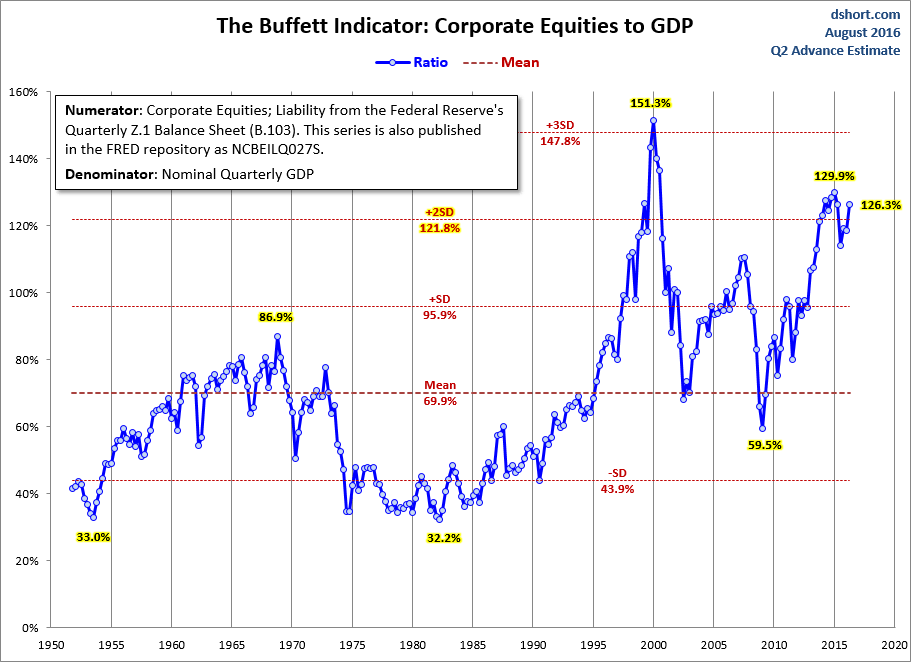A stock-market crash of 50%+ would not be a surprise — or the worst-case scenario
Henry Blogget
By many, many historically predictive valuation meassures, stocks are overvalued to the tune of 75%-100%.
In the past, when stocks have been this overvalued, they have often "corrected" by crashing (1929, 1987, 2000, 2007, for example) . They have also sometimes corrected by moving sideways and down for a long, long time (1901-1920, 1966-1982, for example).DYI Quick Comment #1: From 1901-1920 or 1966-1982 are periods of what is called mean inversions moving from massive overvaluation to massive undervaluation. This process began in August of 2000 when the dividend yield peaked at 1.11%. Since then the next subsequent peak yield has been less severe as in May 2007 at 1.72% and if the top has been put in - then November 2014 at 1.91% dividend yield. It will take many years before the market based on yield bottoms out requiring one or two addition peak to trough cycles ending this secular bear market.
After long eras of over-valuation, like the period we have been in since the late 1990s (with the notable exceptions of the lows after the 2000 and 2007 crashes), stocks have also often transitioned into an era of undervaluation, often one that lasts for a decade or more.
In short, stocks are so expensive on historically predictive measures that the annual returns over the next decade are likely to net out to about 0% per year.
A stock-market crash of ~50% from the peak would not be a surprise. It would also not be the "worst-case scenario," by any means. The "worst-case scenario," which has actually been a common scenario over history, is that stocks would drop by, say 75% peak to trough.
As for timing... Unfortunately, even if historical valuation measures are still valid, and stocks are poised to have another lousy decade, today's valuations won't help you predict what the market will do over the next year or two.
DYI Quick Comment #2: DYI are NOT market timers, if anything I feel as if I'm the boy who cried wolf for over two years due to the market's massive overvaluation. Valuations such as Buffett's Corp. Equities to GDP is great for determining the level of the market but terrible as a short term timing indicator.

However, there will be solace for these last two years of gains plus much more will be transitory. Those with cash will be able to purchase at much lower prices resulting over the long term gains that will out distance inflation plus the associated fee's and taxes. In other words, putting real profits into investors pockets.
Updated Monthly
AGGRESSIVE PORTFOLIO - ACTIVE ALLOCATION - 1/1/16
DYI
No comments:
Post a Comment